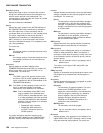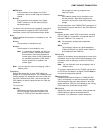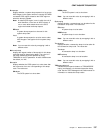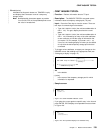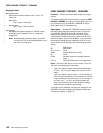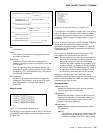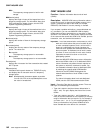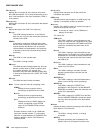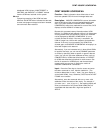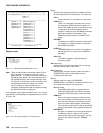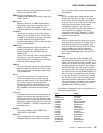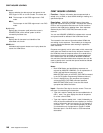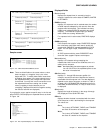CEMT INQUIRE UOW
MAIn
The temporary storage queue is held in main
storage.
MAXitemlen(
value
)
displays the length in bytes of the largest item in the
temporary storage queue. For information about how
CICS calculates the length of items, see the
CICS
System Programming Reference
.
MInitemlen(
value
)
displays the length in bytes of the smallest item in the
temporary storage queue. For information about how
CICS calculates the length of items, see the
CICS
System Programming Reference
.
Numitems(
value
)
displays the number of items in the temporary storage
queue.
| Recovstatus(
value
)
| displays the recovery status of the temporary storage
| queue. The values are:
| Recoverable
| The temporary storage queue is recoverable.
| Notrecovable
| The temporary storage queue is not recoverable.
Transid(
value
)
displays the 4 character id of the transaction that created
the TS queue.
TSqueue(
value
)
indicates that this panel relates to a TSQUEUE inquiry
| and displays the 16-character name of a temporary
storage queue.
Note: Nondisplayable characters appear as periods.
You can use PF2 on the expanded panel to see
the value in hexadecimal.
CEMT INQUIRE UOW
Function: Retrieve information about units of work
(UOWs).
Description: INQUIRE UOW returns information about a
named unit of work, or about all the UOWs currently in the
system. It displays the state of the UOW (for example,
INDOUBT) and whether it is active, waiting, or shunted.
If you suspect a problem with either a recoverable data set
or a connection, you can use INQUIRE UOW to display
UOWs that have been shunted due to a connection or data
set failure. The command, in some cases, displays the name
of the resource that caused the UOW to be shunted, plus the
transaction, user, and terminal that started it.
Important: In an intercommunication environment, a unit of
work can include actions that are to be taken by two
or more connected systems. Such a unit of work is
known as a
distributed
unit of work, because the
resources to be updated are distributed across more
than one system. A distributed unit of work is made
up of two or more
local
units of work, each of which
represents the work to be done on one of the
participating systems.
Note that INQUIRE UOW always returns information
about
local
UOWs—that is, for a distributed UOW it
returns information only about the work required on
the system on which the command is issued. You
can assemble information about a distributed UOW
by matching the network-wide UOW identifier
returned in the NETUOWID field against the
network-wide identifiers of local UOWs on other
systems.
For further information about local and distributed
UOWs, see the
CICS Intercommunication Guide
.
Input: Press the Clear key to clear the screen. There are
two ways of commencing this transaction:
Type CEMT INQUIRE UOW (the minimum abbreviation is
CEMT I UOW). You get a display that lists all the current
UOWs.
Type CEMT INQUIRE UOW (CEMT I UOW) followed by as
many of the other attributes as are necessary to limit the
range of information that you require. So, for example, if
you enter cemt i uow sh con, the resulting display will
show you the details of only those UOWs that have
been shunted due to the failure of a connection.
142 CICS Supplied Transactions



